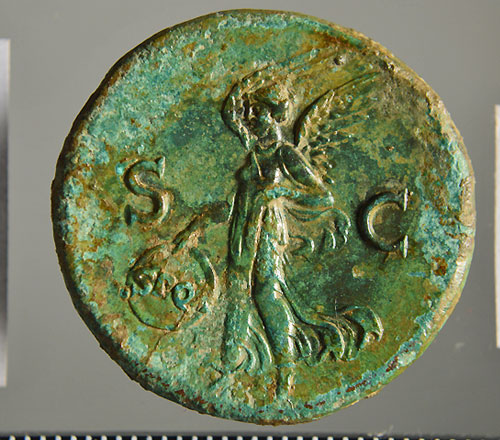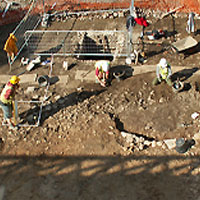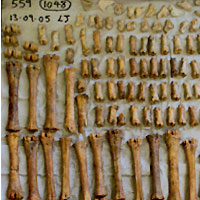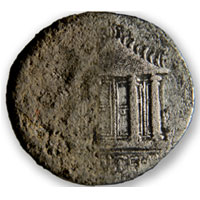Artefact Conservation
Excavations at Cardiff Castle were conducted in 2005-2006 in the footprint of the New Interpretation Centre. Cardiff Conservation Services, Cardiff University was contracted to conserve a selection of the materials recovered from the excavations. These materials consist of copper alloys, glass, iron, lead, semi-precious stone, shale, silver and wood. Conservation was conducted by Phil Parkes and Chris Wilkins in 2018-19.
A total of 890 small finds and context designations representing 2000+ individual objects were examined and/or treated between November (2018) and May (2019). Objects were categorised into five groups (A-E) rated by archaeological significance prior to entering the conservation laboratories. Groups A-C were determined to require some form of conservation treatment to clean, stabilize and reveal further information.
Visit our Artefact Conservation blog to view progress
Examination, Documentation and Analysis
Before and after photographs were produced for all the conserved objects as part of the treatment documentation.The main examination and analysis methods are listed below.
Photography – Most objects were photographed with direct light. Coins were photographed with direct and raking light to highlight the surface details. Glass was photographed with direct light, transmitted light (i.e. light box beneath the object) and a combination of both. Transmitted light enables the observation of transparency of the glass. The intaglio was photographed using the same procedure as the glass with the addition of raking light to highlight the details of the carved surface.
Visual – The objects were examined in-hand and with optical stereo-microscopy.
X-Radiography – A Faxitron X-ray machine was operated at varying voltages and exposure times. The X-rays revealed details on structure, structural stability (e.g. cracks, fissures), decoration and a differentiation in material types (i.e. silver versus copper alloy coins). It also indicated whether additional cleaning was warranted.
Instrumental Analysis – Material types of some objects were identified using portable X-ray fluorescence (pXRF) qualitative analysis. A scanning electron microscopy (SEM) in conjunction with back scattered electron imagery (SEM-BSE) and energy dispersive X-ray analysis (SEM-EDX) was also used. BSE imagery provides a direct comparison of atomic mass with darker areas in the image representing lower atomic mass.
Read the full report here
Menu
Past excavations Previous archaeological investigations in the area have indicated that four Roman forts, all of slightly differing size and shape, were located on the site before Cardiff Castle was built in the medieval period. Learn More
The 2005-2006 excavations With the building of a new interpretation centre at Cardiff Castle an opportunity for a full archaeological investigation of the proposed area was undertaken. The excavations provided us with fascinating new insights into the history of one of Cardiff’s most prominent landmarks. Learn More
Post-excavation and reporting works The post-excavation assessment works were carried in two stages. These resulted in a completed site summary of the excavated remains by phase and included assessments by specialists of the various categories of artefact and environmental remains. Learn More
Artefact conservation A total of 890 small finds and context designations representing 2000+ individual objects were examined and/or treated between November 2018 and May 2019. Learn more
About the project
Cardiff Castle is one of the most significant heritage assets in the Principality. Sited in the centre of the capital of Wales, it is in the care of Cardiff City Council. The Castle has a long history with physical evidence of remains from the Roman, medieval and early post-medieval remains accessible to visitors and the remarkable neo-gothic restoration.
Please click here to find out more about us and our work








